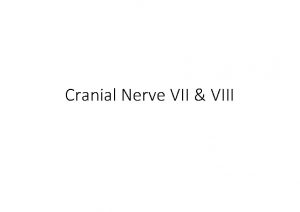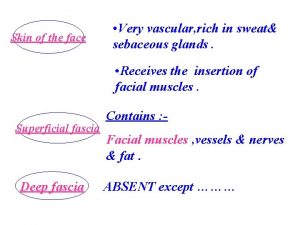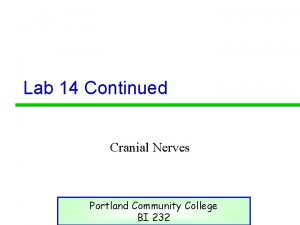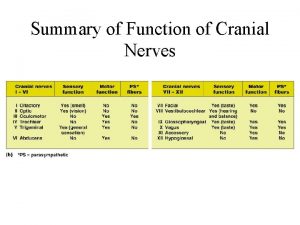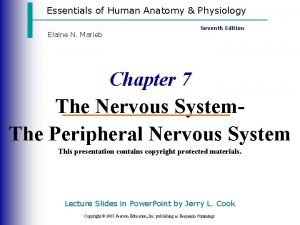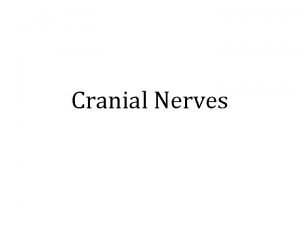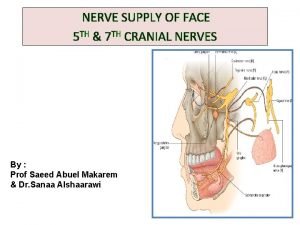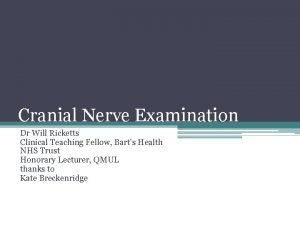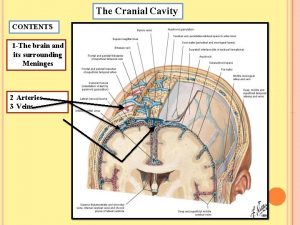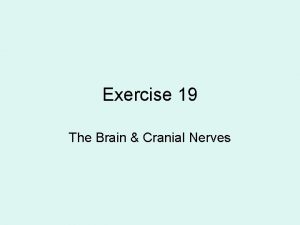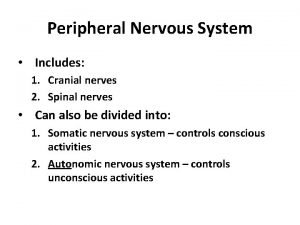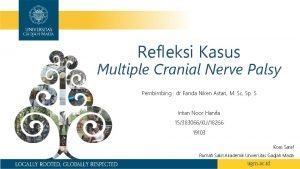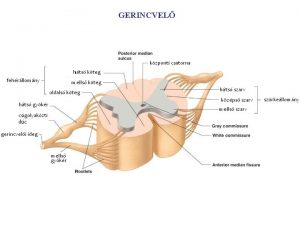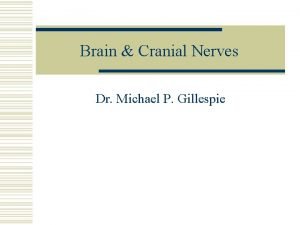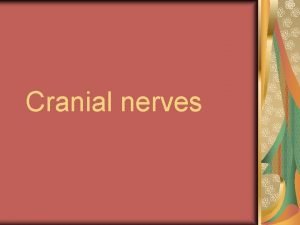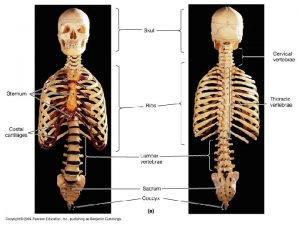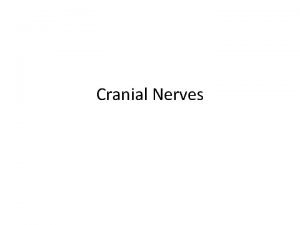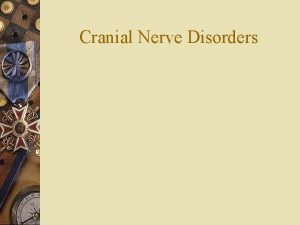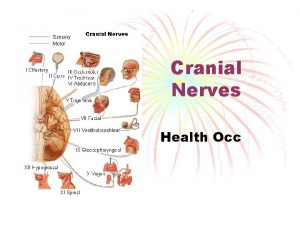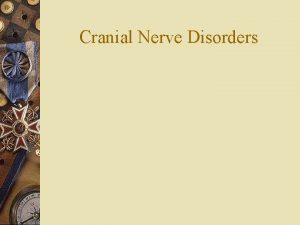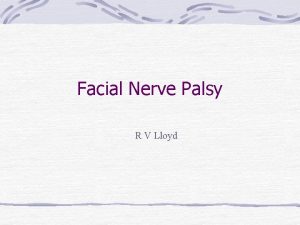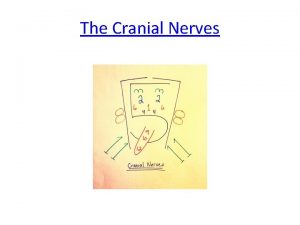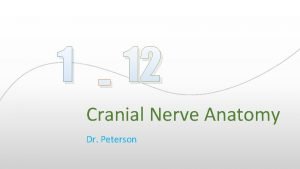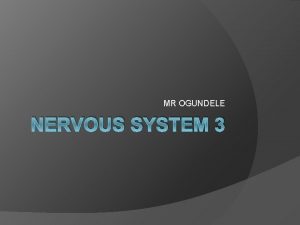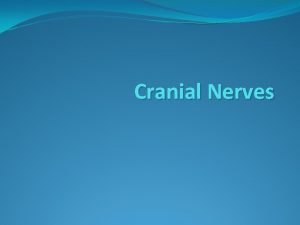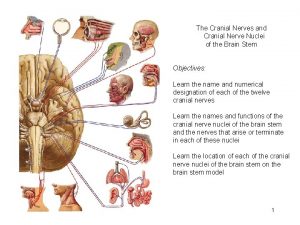1 Cranial Nerve VII Facial Nerve 1 Motor


















- Slides: 18

1

Cranial Nerve VII: Facial Nerve 1. Motor function: muscles of facial expression. 2. Parasympathetic function: innervation to lacrimal glands and some salivary gland. 3. Visceral sensory function: taste from anterior 2/3 of tongue 2

Anatomical Course • Intracranial – the course of the nerve through the cranial cavity, and the cranium itself. • Extracranial – the course of the nerve outside the cranium, through the face and neck.

Intracranial branches

Extracranial branches





Intracranial Lesions: occur during the intracranial course of the facial nerve • The muscles of facial expression will be paralysed or severely weakened. The other symptoms produced depend on the location of the lesion, and the branches that are affected: • Chorda tympani – reduced salivation and loss of taste on the ipsilateral 2/3 of the tongue. • Nerve to stapedius – ipsilateral hyperacusis (hypersensitive to sound). • Greater petrosal nerve – ipsilateral reduced lacrimal fluid production. The most common cause of an intracranial lesion of the facial nerve is middle ear pathology – such as a tumor or infection. If no definitive cause can be found, the disease is termed Bell’s palsy.

Extracranial Lesions: occur during the extracranial course of the facial nerve (distal to the stylomastoid foramen) • Only the motor function of the facial nerve is affected, resulting in paralysis or severe weakness of the muscles of facial expression. There are various causes of extracranial lesions of the facial nerve: Parotid gland pathology – e. g a tumor, parotitis, surgery. Infection of the nerve – particularly by the herpes virus. Compression during forceps delivery of the baby. Idiopathic – If no definitive cause can be found, the disease is termed Bell’s palsy.

Bells-Palsy-Right-Side: weakness of the muscles of facial expression, due to facial nerve paralysis

13



The pharyngeal plexus is formed by: • the pharyngeal and laryngeal branches of the vagus nerve [X]; • The pharyngeal branches of the glossopharyngeal nerve [IX].


Online • http: //emedicine. medscape. com/article/1873373 -overview#a 2 • https: //quizlet. com/41588314/i-oral-cavity-and-pharynx-flash-cards/
 Trigeminal nerve which cranial nerve
Trigeminal nerve which cranial nerve Vestibulocochlear nerve.
Vestibulocochlear nerve. Face veins and arteries
Face veins and arteries Cranial nerves sensory and motor
Cranial nerves sensory and motor Cranial nerve
Cranial nerve Some say money matters cranial nerves
Some say money matters cranial nerves Cranial nerves motor and sensory
Cranial nerves motor and sensory Cranial nerve two
Cranial nerve two Cranial nerve mnemonic
Cranial nerve mnemonic 12 cranial nerves labeled
12 cranial nerves labeled 7th cranial nerve
7th cranial nerve Cranial nerve assessment
Cranial nerve assessment Lateral venous lacunae
Lateral venous lacunae Cranial nerves
Cranial nerves Mnemonic for cranial nerves
Mnemonic for cranial nerves Multiple cranial nerve palsy
Multiple cranial nerve palsy Proprioception cranial nerves
Proprioception cranial nerves Keresztezett extensor reflex
Keresztezett extensor reflex Cranial nerve 4 function
Cranial nerve 4 function

